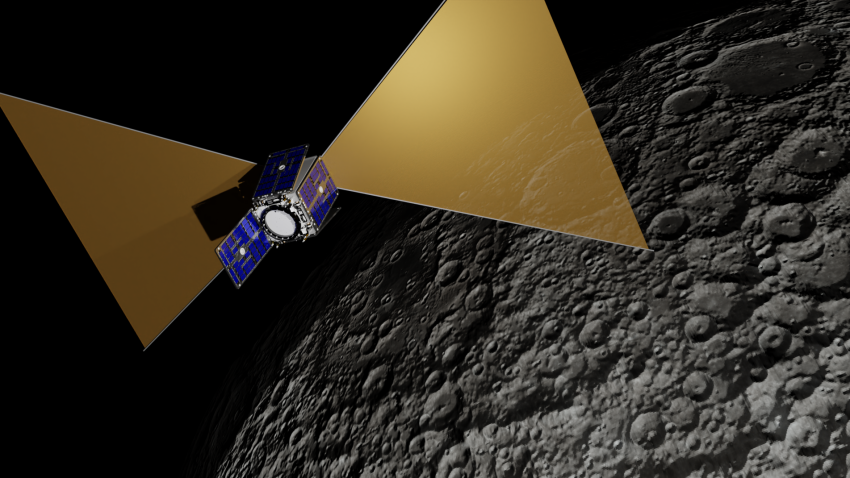
CosmoCube mission presented at NAM ‘25
CosmoCube is a UK-led mission designed to probe the universe’s “Dark Ages” from the unique vantage of lunar orbit. After the Big Bang, before stars and galaxies had formed, the universe was dark and almost featureless—yet its faint hydrogen signal holds the key to understanding cosmic dawn, the growth of structure, and the nature of dark matter. Detecting this signal is impossible from Earth because of radio interference, but CosmoCube will overcome this by operating a precision-calibrated low-frequency radiometer from the far side of the Moon, naturally shielded from terrestrial noise.
The project was presented at the National Astronomy Meeting 2025 (NAM 2025) and featured in a press release by the Royal Astronomical Society, underlining its significance in advancing radio cosmology. Led by the University of Cambridge with partners including University of Portsmouth, STFC RAL Space, and Surrey Satellite Technology Ltd, CosmoCube is currently in prototyping and environmental testing, with a roadmap targeting lunar orbit deployment later this decade.
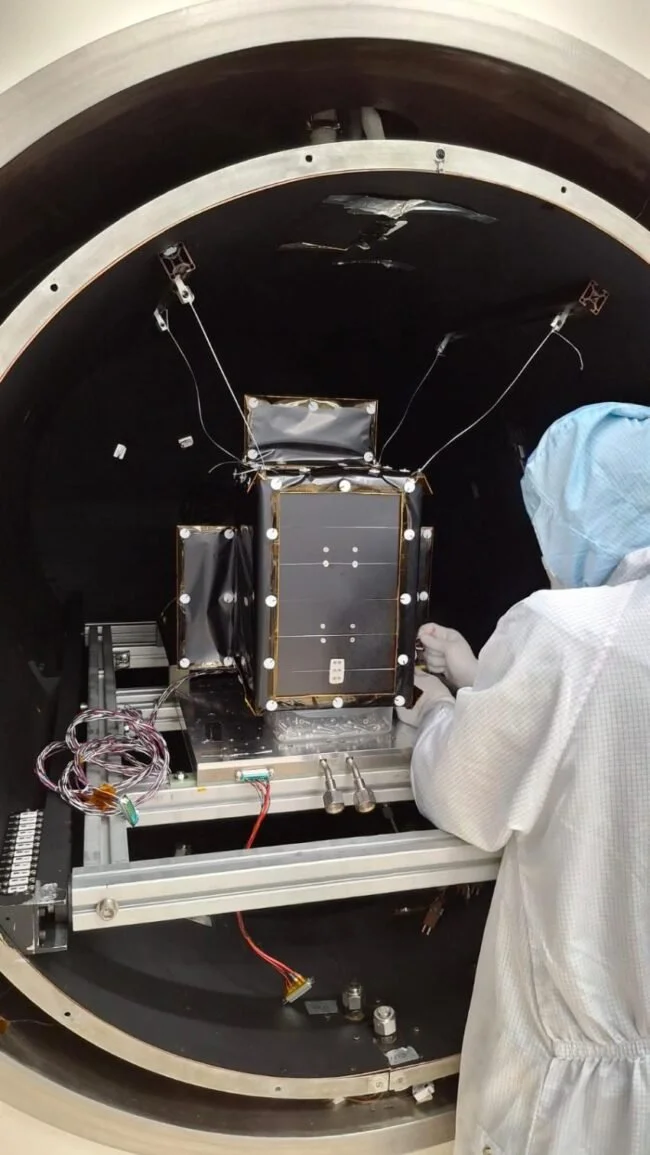
CosmoCube Advances Through UKSA Science Bilateral Programme with Key Tests at RAL Space
As part of the UK Space Agency’s Science Bilateral Programme, the CosmoCube consortium has been progressing mission development through a series of critical technical studies and tests. One highlight of this phase was the successful completion of Thermal Vacuum Chamber (TVAC) tests of the candidate platform at STFC RAL Space.
The TVAC campaign placed the spacecraft platform in a simulated space environment, exposing it to the extreme thermal and vacuum conditions expected in lunar orbit. These tests are a crucial milestone, validating the performance and resilience of the hardware before moving forward to more advanced stages of mission design.
This work underscores the value of the Science Bilateral Programme in enabling UK-led missions to collaborate with international partners, while strengthening national expertise in space science and engineering. Together, Cambridge, RAL Space, Portsmouth, and SSTL are building the foundation for CosmoCube’s success as a pathfinding cosmology mission in lunar orbit.
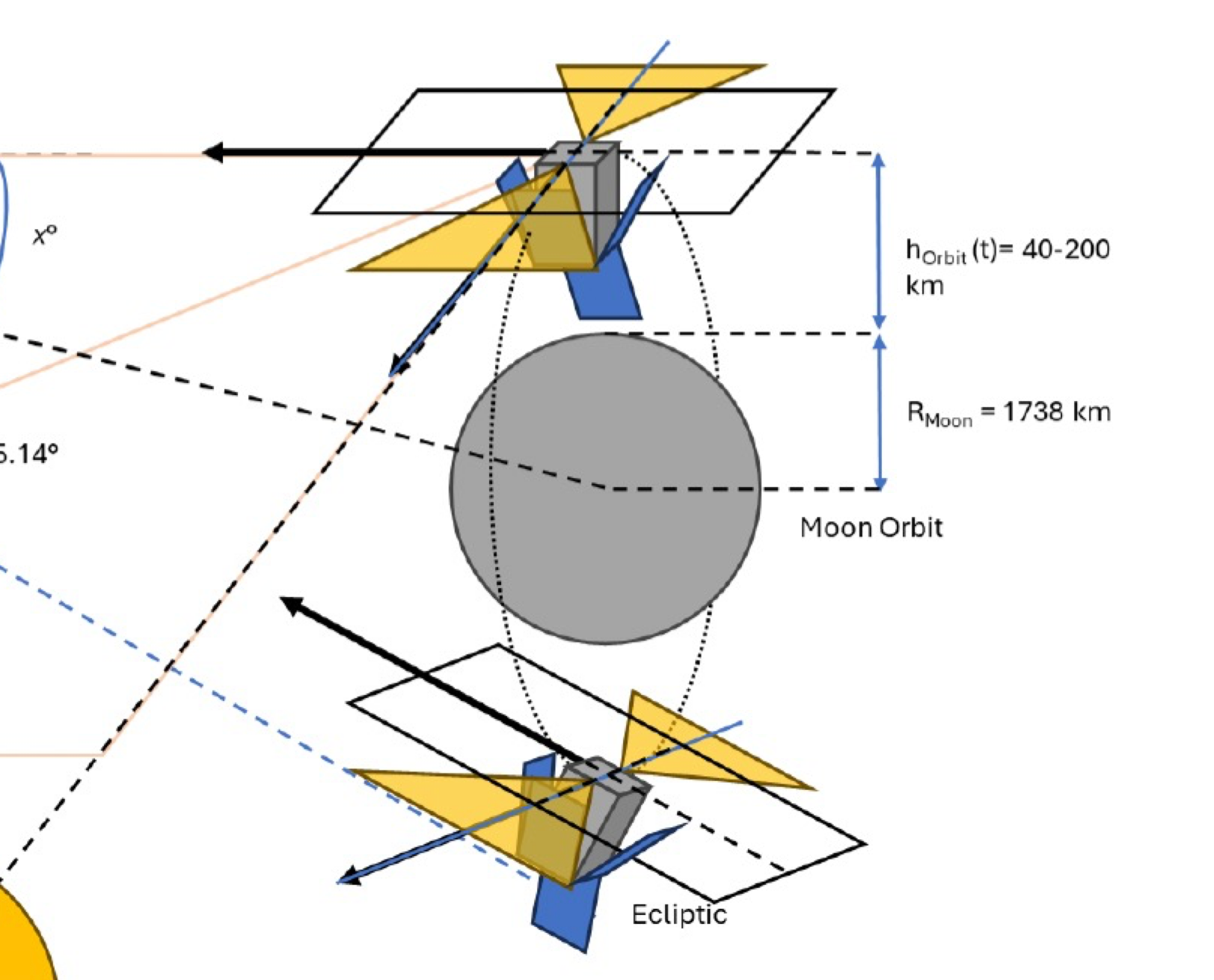
SSTL Begins Phase 0 Study for CosmoCube Mission
Surrey Satellite Technology Ltd (SSTL) has commenced a three-month Phase 0 study for the CosmoCube mission. The University of Cambridge is the grant holder under the UK Space Agency’s Space Science and Exploration Bilateral Programme.
The mission aims to operate in low lunar orbit (LLO), taking advantage of the far side of the Moon’s radio-quiet environment to observe the 21-cm hydrogen line over a redshift range of approximately 13 to 285. This will provide a continuous observational sweep of the Universe’s early baryonic content, from the “Dark Ages” through to the Cosmic Dawn (around 10 to 330 million years after the Big Bang).
As part of the study, SSTL will examine various non-CubeSat platform configurations for hosting the CosmoCube radio frequency payload. The goal is to refine cost estimates, development timelines (excluding the payload), and overall mission architecture. These findings will feed into proposals to the UK Space Agency’s Science Bilaterals programme, other UKSA initiatives, or potentially an ESA Mini-M class mission.
SSTL is working with a consortium that includes the University of Cambridge, the University of Portsmouth, and RAL Space.
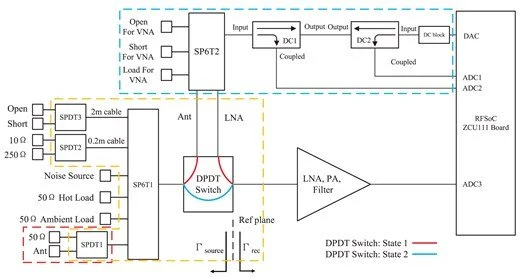
RFSoC receiver calibration system for 21-cm global spectrum experiments from space: the CosmoCube case
The CosmoCube project plans to deploy a global 21-cm spectrometer with 10–100 MHz observation band in a lunar orbit. The farside part of such an orbit, i.e. the part of orbit behind the Moon, offers an ideal site for accurately measuring the 21-cm signal from the dark ages, cosmic dawn, and epoch of reionization, as the effects of the Earth’s ionosphere, artificial radio frequency interference, and complex terrain and soil are all avoided. Given the limitations of a satellite platform, we propose a receiver calibration system design based on a radio frequency system-on-chip, consisting of a vector network analyser (VNA) subsystem, and a source switching subsystem. We introduce the measurement principle of the VNA, and discuss the effect of quantization error. The accuracy, stability, and trajectory noise of the VNA are tested in laboratory experiments. We also present the design of the source-switching subsystem, generating mock data sets, showing that the imperfect return loss, insertion loss, and isolation of surface-mounted microwave switches have a minimal effect on the sky foreground fitting residuals, which are within ±10 mK under optimal fitting condition. When all possible measurement errors in reflection coefficients and physical temperatures are taken into account, the foreground fitting residuals for the 50–90 MHz part of the spectrum remain around ±20 mK.

The spectrometer development of CosmoCube, lunar orbiting satellite to detect 21-cm hydrogen signal from cosmic dark ages
The cosmic Dark Ages represent a pivotal epoch in the evolution of the Universe, marked by the emergence of the first cosmic structures under the influence of dark matter. The 21-cm hydrogen line, emanating from the hyperfine transition of neutral hydrogen, serves as a critical probe into this era. We describe the development and implementation of the spectrometer for CosmoCube, a novel lunar orbiting CubeSat designed to detect the redshifted 21-cm signal within the redshift range of 13 to 150. Our instrumentation utilizes a Xilinx Radio Frequency System-on-Chip (RFSoC), which integrates both Analog-to-Digital Converters (ADCs) and Digital-to-Analog Converters (DACs), tailored for the spectrometer component of the radiometer. This system is characterized by a 4096 FFT length at 62.5 kHz steps using a Polyphase Filter Bank (PFB), achieving an average Effective Number of Bits (ENOB) of 11.5 bits throughout the frequency of interest, from 10 to 100 MHz. The spectrometer design is further refined through loopback tests involving both DAC and ADC of the RFSoC, with DAC outputs varying between high (+1 dBm) and low (−3 dBm) power modes to characterize system performance. The power consumption was optimized to 5.45 W using three ADCs and one DAC for the radiometer. Additionally, the stability of the ADC noise floor was investigated in a thermal chamber with environmental temperatures ranging from 5 to 40 ∘C. A consistent noise floor of approximately −152.5 dBFS/Hz was measured, with a variation of ±0.2 dB, ensuring robust performance under varying thermal conditions.
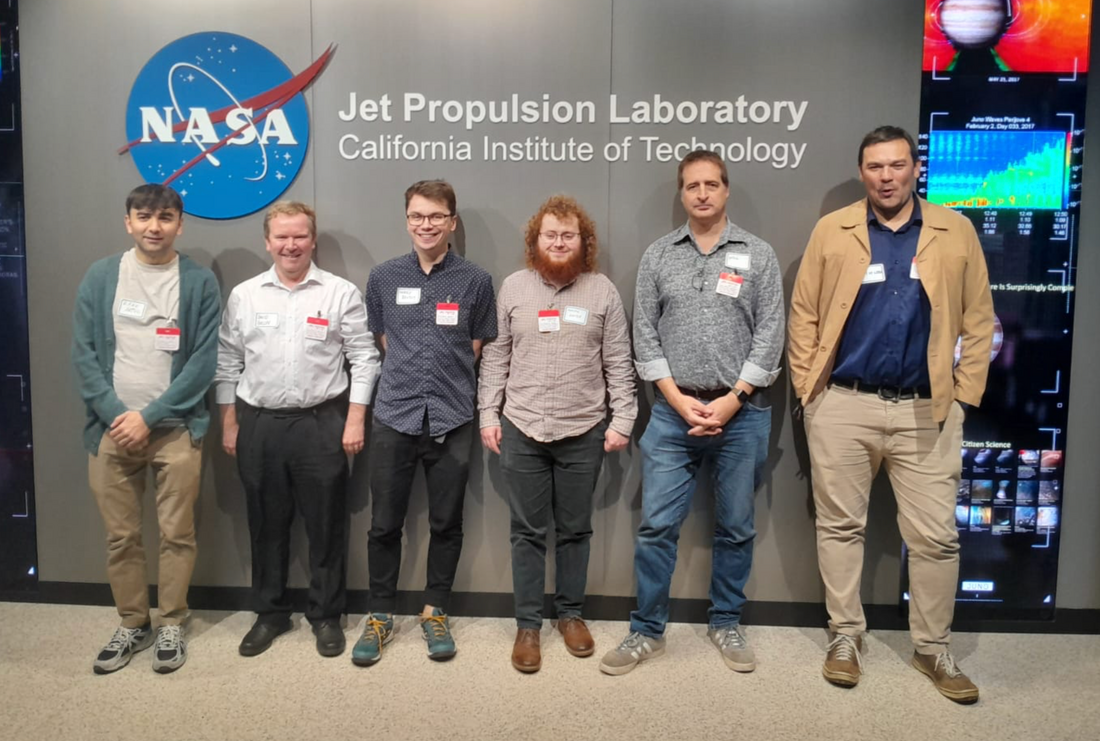
CosmoCube Team Visits NASA JPL for Mission Development Talks
A contingent of the CosmoCube consortium recently visited NASA’s Jet Propulsion Laboratory (JPL) in Pasadena, California. The visit provided an excellent opportunity to discuss the mission concept in detail and explore new avenues of collaboration with JPL colleagues.
During the meetings, the team exchanged expertise on mission design, calibration strategies, and operational planning, further strengthening the international partnership behind CosmoCube. The collaboration with JPL will play a key role in advancing the technical development of the mission as it progresses towards future phases.
This visit marks another important milestone for CosmoCube, highlighting the project’s growing global engagement and reinforcing its ambition to deliver groundbreaking science from lunar orbit.

UK Government Funding Boosts CosmoCube’s Role in International Space Exploration
CosmoCube has been awarded £1.5 million as part of a £7.4 million funding package from the UK Space Agency in the “Space Science and Exploration Bilateral Programme”. This investment supports a suite of UK-led scientific and engineering projects that strengthen the UK’s role in global missions to the Moon, Mars, and Venus.
Under this award, the University of Cambridge, STFC RAL Space, and the University of Portsmouth, in partnership with NASA, will lead the development of the mission, space platform, payload, and science for CosmoCube — a CubeSat designed to carry a precision radiometer to probe spectral distortions in the Universe’s cosmic microwave background.
The funding comes alongside broader UK collaborations with international agencies including ISRO (India), JAXA (Japan), CSA (Canada), and NASA, in projects ranging from lunar spectroscopy and detecting subsurface ice, to mapping water-ice on Mars. CosmoCube stands among these as a mission that will advance the UK’s capability in astrophysics and cosmology at the frontier of space science.
This investment highlights the government’s commitment to enabling cutting-edge discovery and establishes CosmoCube as a flagship mission contributing to the exploration of the early Universe.
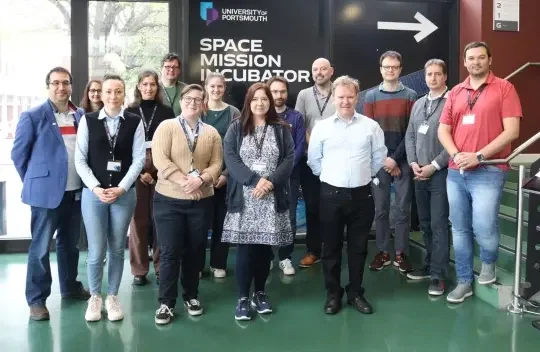
Pilot Study Rapidly Developing Mission Design for Moon-Orbiting Satellite
A pilot study conducted by the University of Portsmouth’s Space Mission Incubator has rapidly developed a mission design for a small satellite to orbit the Moon. The study supports the CosmoCube project, a cosmology mission that will collect radio waves to explore the “Dark Ages” of the Universe.
The project is led by the University of Cambridge, with strong contribution from Portsmouth. The study involved science and engineering experts working together in real-time using Portsmouth’s newly established concurrent design facility, modelled after NASA’s Jet Propulsion Laboratory’s approach.
Key outcomes included evaluations of lunar orbits that maximise shielding from Earth’s radio-frequency noise, assessments of required propulsion, and analyses of trade-offs in satellite design. Surrey Satellite Technology Ltd (SSTL), RAL Space, and other industry experts also supported the study, helping to strengthen the mission concept.
The results of this pilot will inform the next development steps for CosmoCube as the consortium refines cost estimates, mission architecture, and timeline.
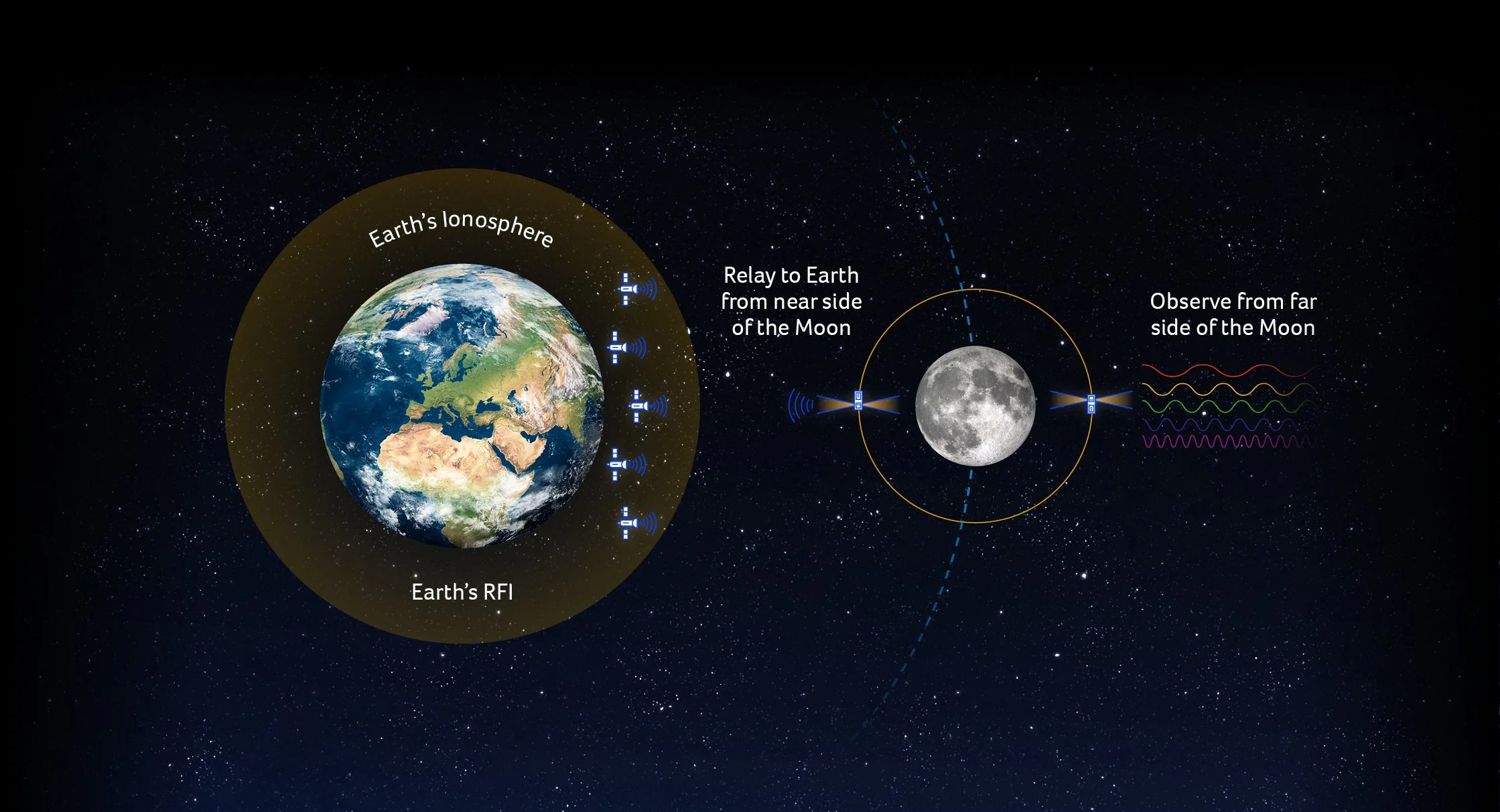
CosmoCube Receives 3-Month Study Funding via UKSA Bilateral Missions Call
In January 2023, the CosmoCube mission was awarded a short-term grant under the UK Space Agency’s Call for Bilateral Space Science and Exploration Missions (Category B) to support new mission studies over a period of three months.
This funding enabled the consortium — including Cambridge, RAL Space and Portsmouth — to carry out accelerated concept development work. The study period allowed for refining scientific goals, defining mission architecture, evaluating platform trade-offs, and undertaking preliminary cost and schedule planning.
This Category B grant provided the foundation for converting the CosmoCube concept into a full proposal, marking an important step towards establishing the mission as a leading UK-led space science initiative.

CosmoCube Gains Early-R&D Funding via UKSA/STFC Call for Next-Generation Space Science Technologies
CosmoCube was among ten UK projects awarded early-stage funding through the UK Space Agency and STFC’s “Technology for Space Science” call. This initiative aims to boost innovation in space-based astronomy, cosmology, astrophysics, and solar system science.
Specifically, the University of Cambridge, together with RAL Space, received support for their proposal on the miniaturisation of high-precision radio receivers for cosmological observations of the Dark Ages from cost-effective space platforms in lunar orbit.
This award enabled the CosmoCube team to begin feasibility work and early design studies, paving the way to explore instrument concepts in purpose-built small platforms. It marked a key first step in laying the technical foundations for the mission.
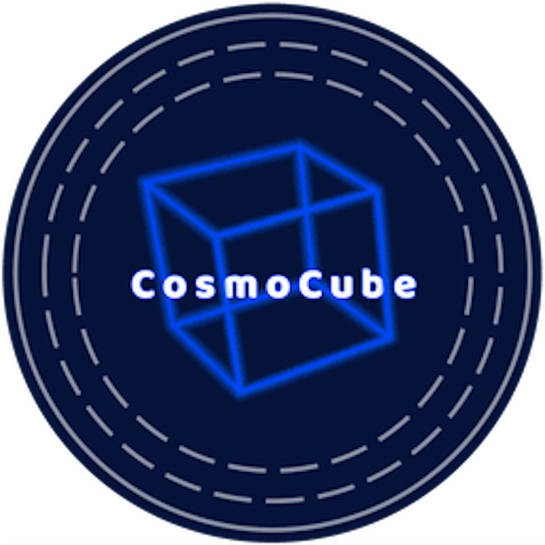
CosmoCube Featured in Appleton Space Conference
At the 17th Appleton Space Conference, held on 2 December 2021, Dr Eloy de Lera Acedo delivered a presentation entitled “CosmoCube: What Happened After the Big Bang?”
The talk outlined the scientific motivation for CosmoCube — probing the “Dark Ages” of the Universe by observing the redshifted 21-cm hydrogen signal from lunar orbit — and introduced early ideas about mission design, instrumentation, and technical challenges.
This presentation helped raise awareness among space science stakeholders of CosmoCube’s ambitions and highlighted how UK institutions, including Cambridge, RAL Space, Portsmouth, and industry partners, are contributing to advancing the frontiers of cosmology and space instrumentation.
